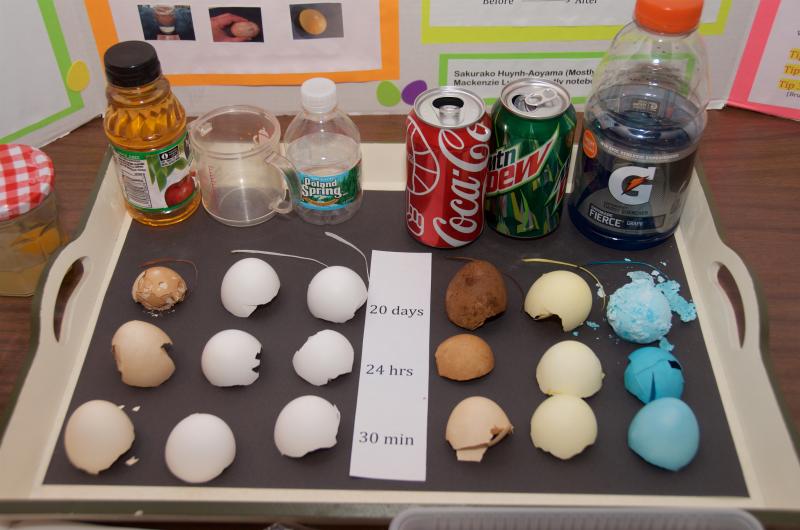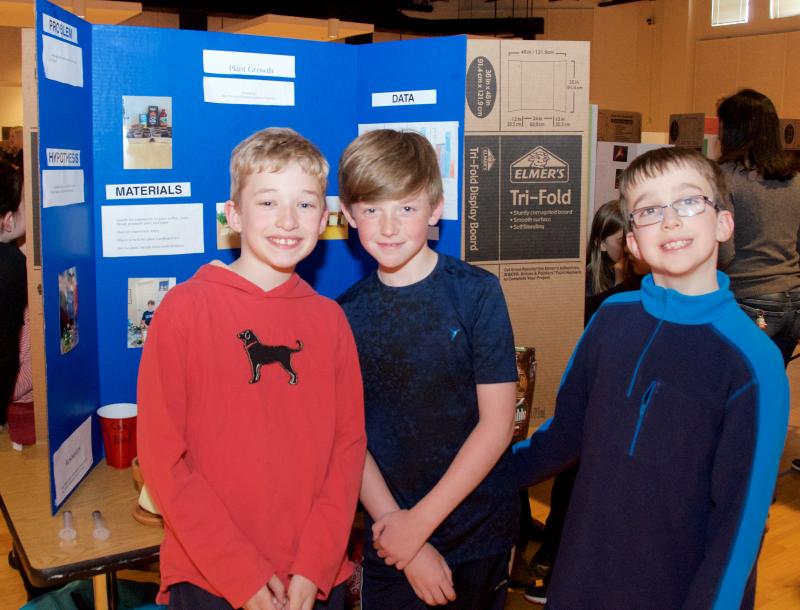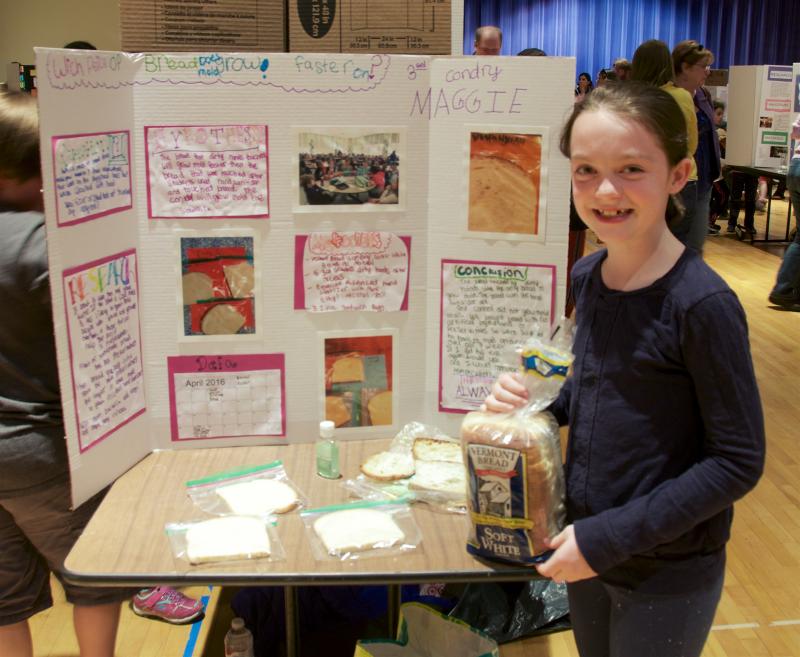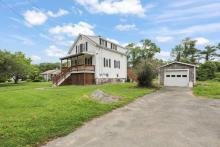Sippican School hosts annual science fair
The Sippican School science fair and STEM event combined on Friday for an experimental afternoon.
In the auditorium, kids displayed a variety of science experiments, from growing mold to growing pansies.
Maggie Ward tested three pieces of preservative-free bread to see which one would get mold.
"At lunch I had five friends touch it with their dirty hands," said Ward, a third grader.
Another piece was also touched, but only after her friends used hand sanitizer. The third piece wasn't touched at all. After 25 days, only the piece touched by the unwashed hands had any mold, which surprised the young scientist.
When asked how she came up with her project, Ward answered simply, "I found a piece of bread with mold on it and I didn't have a project."
Fourth grade friends Jacob Hadley, Jaymison Gunschel and Alex Fox teamed up for their project in which they tested the effect of different pineapple juice, decaffeinated coffee, cow blood (you read that right), V8 and water on potted pansies.
Hadley said he thought the pineapple would have fared better than other liquids in the experiment, but that pansy shriveled. So did the one treated with V8, which left a skin of dried tomato juice on the surface. Cow blood was the worst and coffee was only a little better.
"Stick with water," advised Gunshel.
Teacher Chelsea Stafford organized the fair, which was optional for all but the third grade classes, and said there were 120 participants and 85 projects.
"I'm very impressed," shes said. "There are a lot of great ideas."
Across the hallway, the school also held its STEM night. The event was postponed twice due to bad weather.
STEM, which stands for science, technology, engineering and math, has been a priority at the school, and teachers brought some of the hi- and lo-tech materials they have used themselves.
At one station with teacher Penny Sullivan, kids used an iPad app and a green background to do newscasts. Sullivan's students used the app this semester to create news reports that made it look like they were in a news studio or "on location."
"I like doing something like this much better than a report," said Sullivan's student, Emma McGinnis.
Other stations included computer coding and robotics.
Science teacher Erin Furfey helped organize the STEM night and said the purpose was to "get people excited about technology at the school."





















